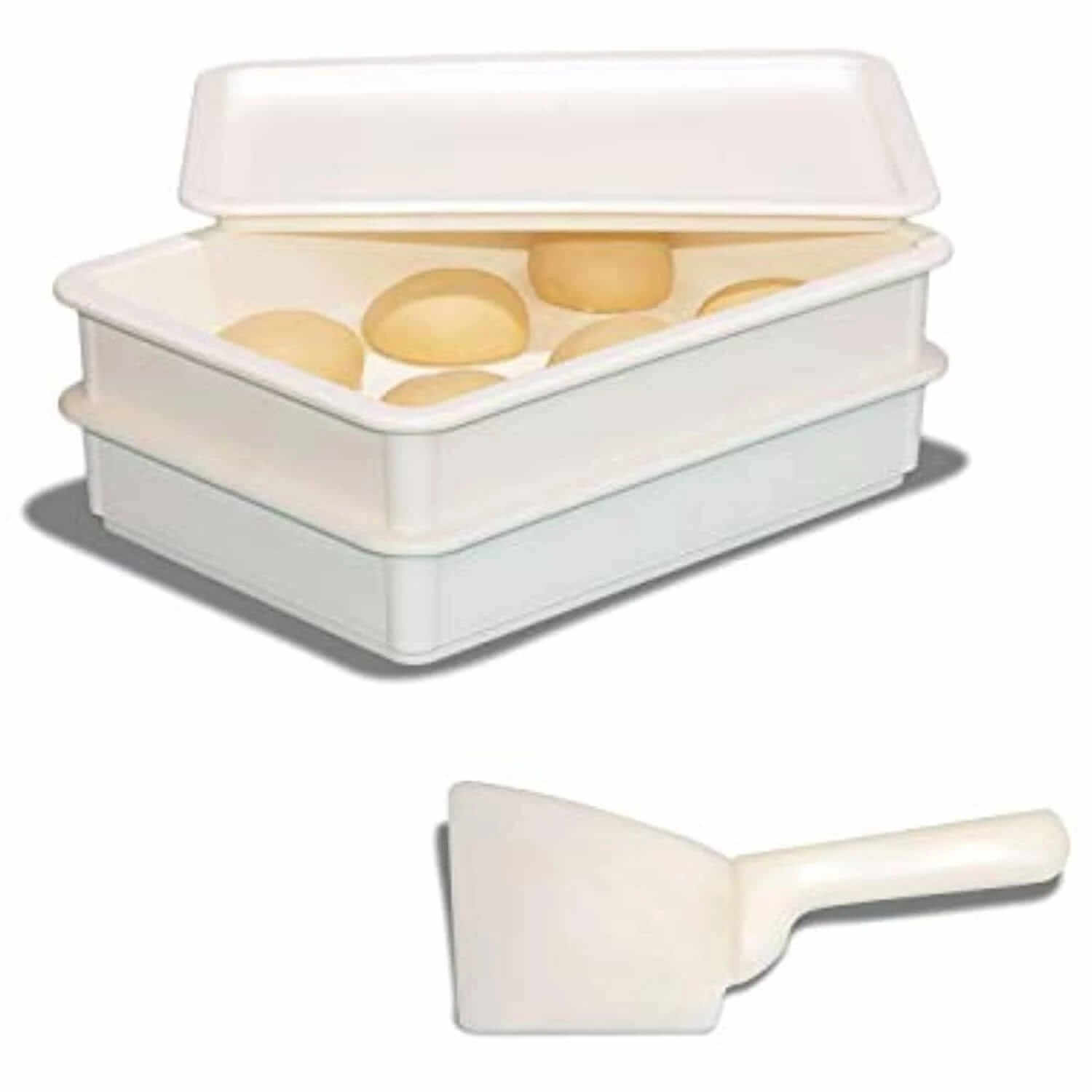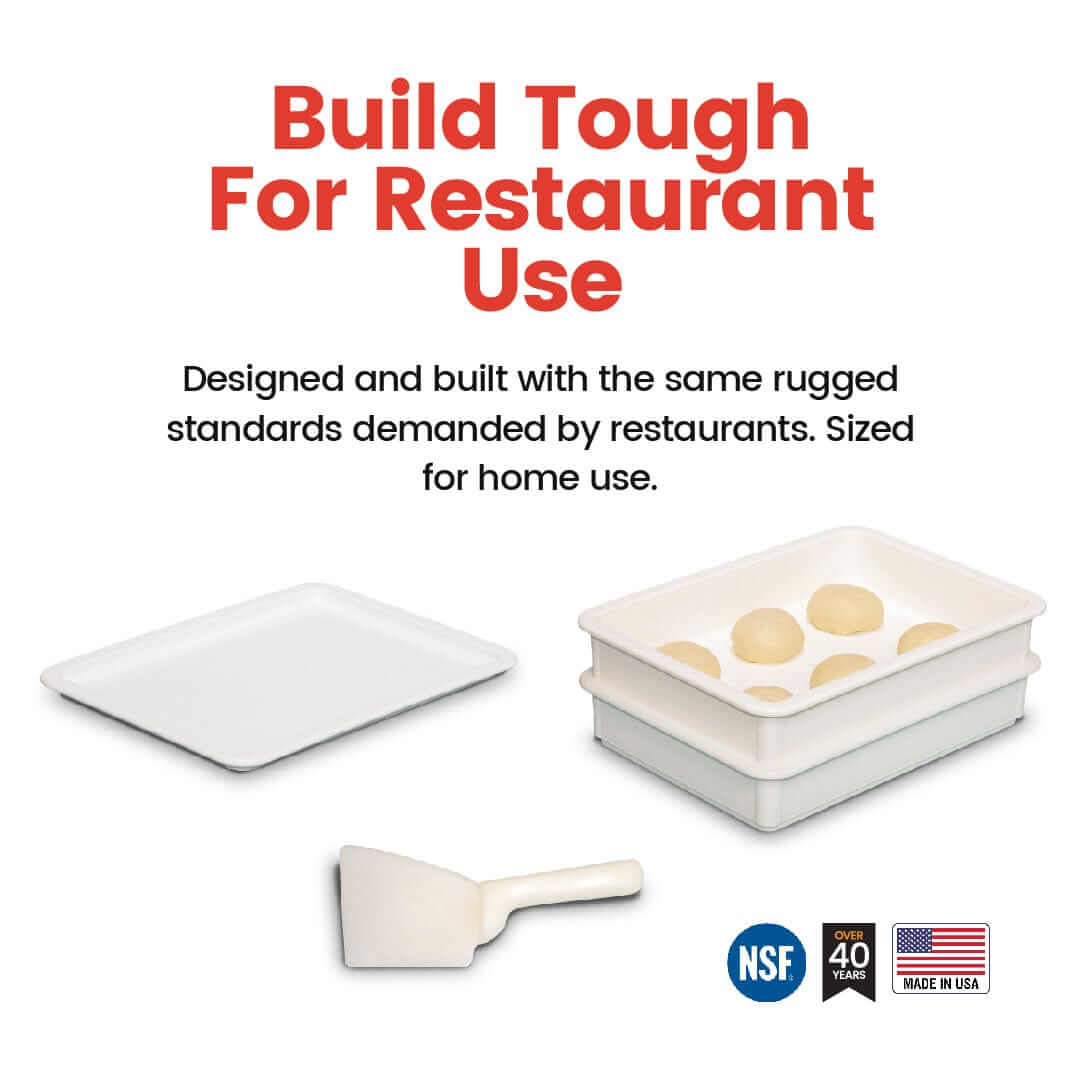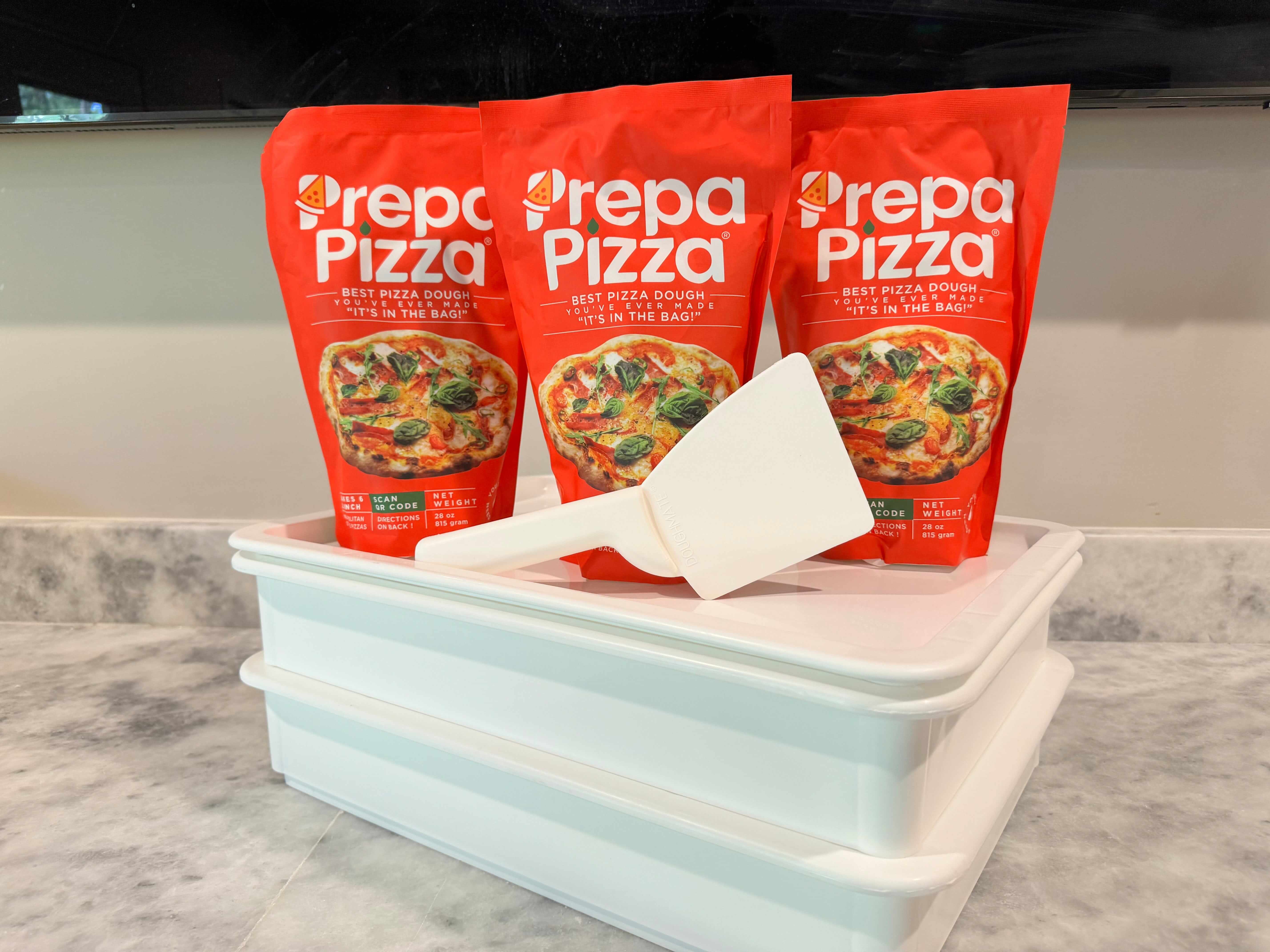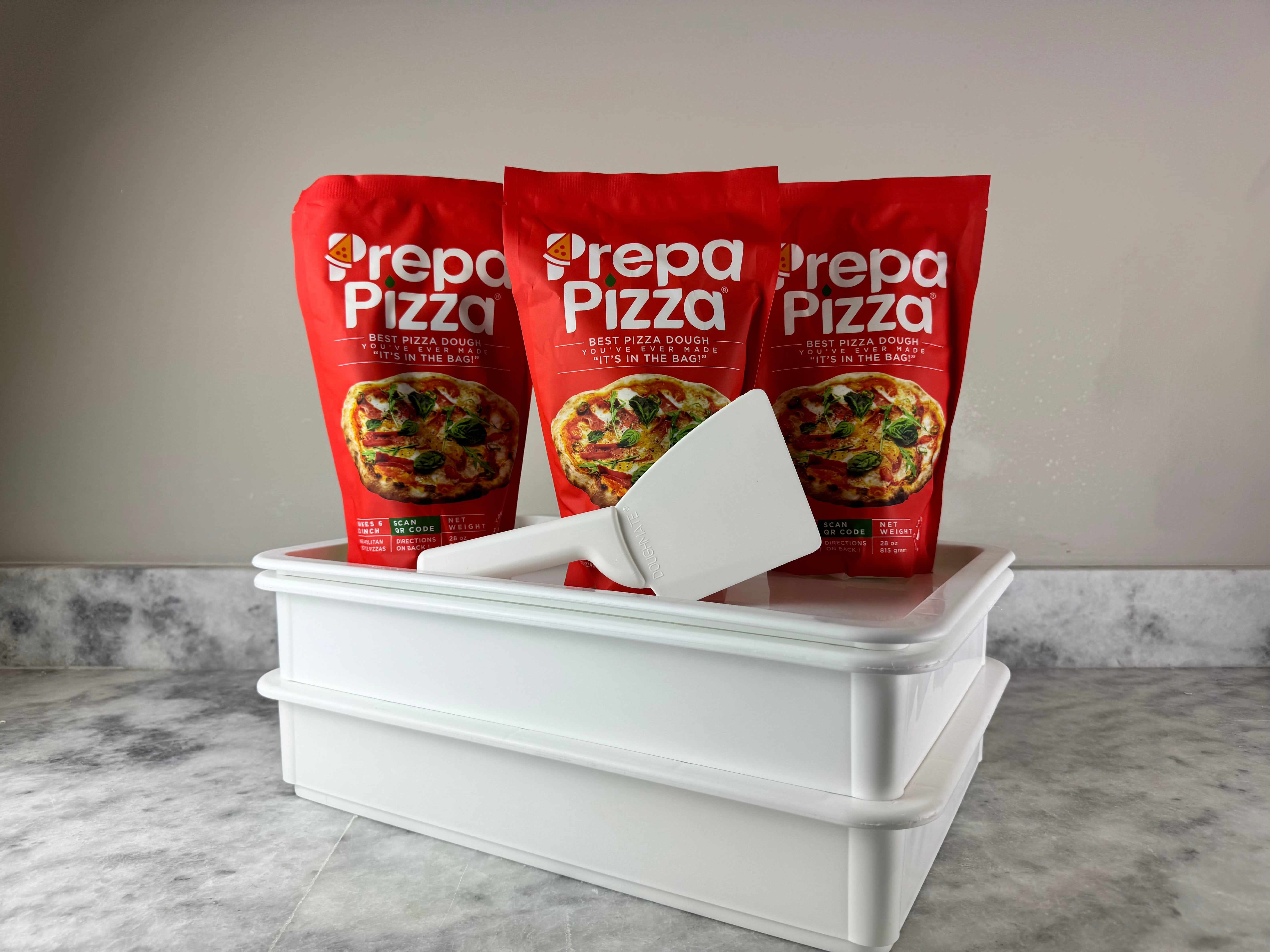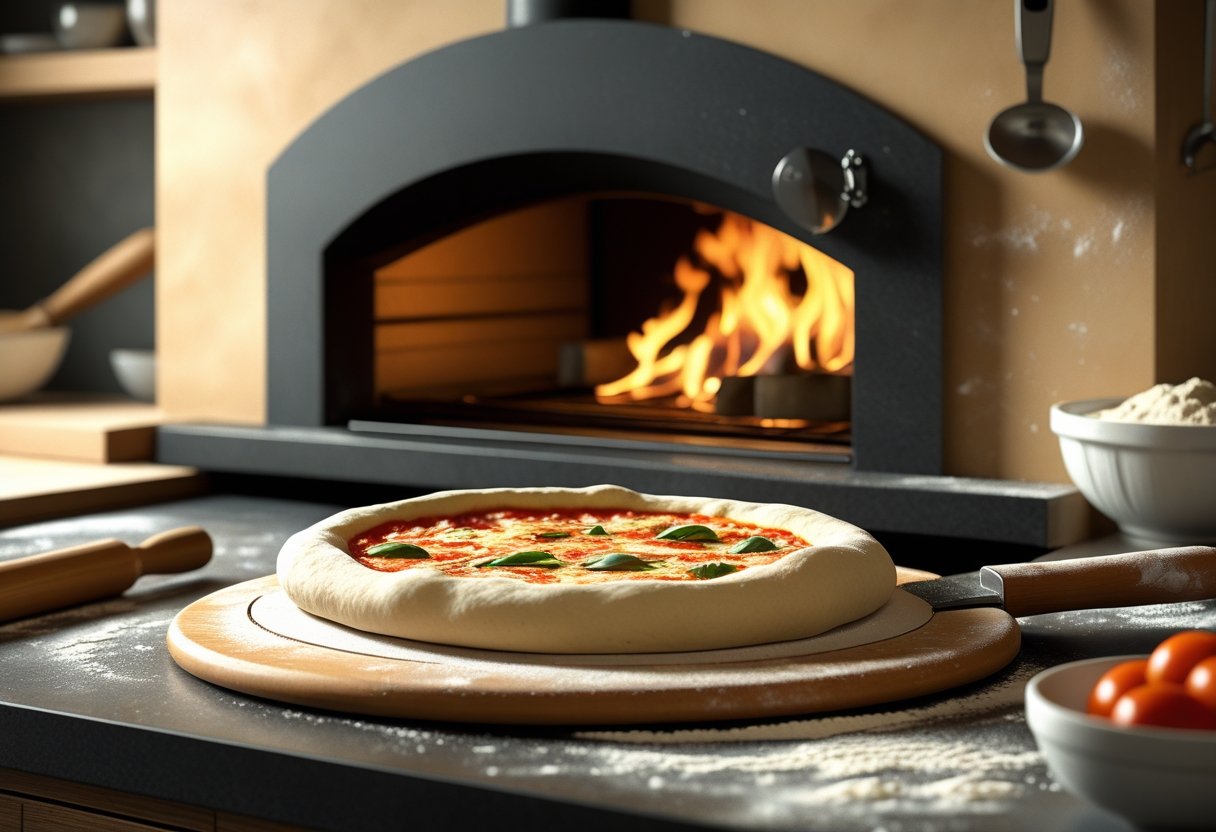
Can You Bake Pizza Dough Without Toppings? A Guide to Perfect Crust Baking Techniques
Baking pizza dough without toppings is entirely possible and can yield a simple, versatile crust you can enjoy on its own or use as a base for future recipes. You can bake pizza dough without toppings, and doing so allows you to create a crisp, well-cooked crust that’s perfect for snacks or meal prep. Using premade dough like Prepa Pizza’s dough kit makes this process easy, ensuring restaurant-quality results with premium ingredients every time. Explore the Prepa Pizza dough kit here to get started.
If you want a hassle-free way to enjoy fresh pizza dough at home, Prepa Pizza provides premium, ready-to-bake dough that saves you time without sacrificing quality. Whether you plan to bake it plain or add toppings later, Prepa Pizza dough lets you skip complicated prep steps and focus on achieving the perfect crust texture and flavor. Visit the Prepa Pizza dough kit page and try it yourself to see how it fits your baking needs.
Can You Bake Pizza Dough Without Toppings?
You can bake pizza dough without any toppings, and doing so changes the texture and structure of the pizza base. Using a high-quality premade dough like Prepa Pizza’s premium pizza dough allows you to control the bake and achieve a sturdy crust suited for various uses. Baking naked dough can be practical but requires attention to baking time and temperature to avoid issues like a soggy crust or undercooked center.
Prepa Pizza offers restaurant-quality premade dough that holds up well even when baked without toppings. To explore their dough, visit the Prepa Pizza Dough Kit.
What Happens When You Bake Naked Pizza Dough
When you bake pizza dough without toppings, the crust develops a firm, golden surface but can dry out if baked too long. Without sauce and cheese to retain moisture, the dough’s exterior crisps faster while the inside can become airy or dense depending on how well it was prepared.
Baking naked dough allows the gluten structure in the crust to fully set. This results in a more rigid base that can support heavy toppings later or be eaten as is with added seasoning. However, uneven heat or underbaking might lead to a doughy or soggy middle, especially if the dough is thick.
Using premium dough from Prepa Pizza helps minimize these problems since their dough is designed for consistent rise and proper hydration, giving you a balanced crust whether baked plain or topped.
Reasons to Bake Pizza Dough Without Toppings
There are concrete reasons to bake dough before adding toppings. Pre-baking, or blind baking, can prevent a soggy crust when using wet or heavy toppings by sealing the dough’s surface. It also helps achieve a crispy bottom that regular baking with toppings might struggle to deliver.
If you’re short on time, baking the dough ahead creates a ready-to-use base that can be topped and finished quickly. Some people prefer the firm texture of a baked crust for serving flatbreads or savory snacks without extra ingredients.
Prepa Pizza’s dough can withstand these baking methods due to its high-quality ingredients and consistent texture, making this approach accessible in home kitchens.
Situations When Blind Baking Pizza Base Makes Sense
Blind baking pizza dough makes sense in several key situations:
- When using toppings with high moisture like fresh tomatoes or vegetables
- For thick crusts that might otherwise remain doughy inside
- When preparing snack-sized pizza crackers or flatbreads that don't require sauce or cheese
- If you want to freeze pre-baked crusts for quick future meals
This technique is especially useful to avoid a soggy crust and ensure a well-cooked base. Thanks to the reliability of Prepa Pizza’s dough, it can be safely baked on its own without sacrificing quality.
In these scenarios, blind baking becomes a reliable step in your pizza preparation process to get optimal texture and flavor from your crust.
Blind Baking vs. Direct Baking: Key Differences
When baking pizza dough without toppings, your choice between blind baking and direct baking will influence the crust’s texture, structure, and ability to hold toppings later. Both methods affect how crisp the crust becomes, as well as how it interacts with heat sources like pizza steel, stone, or pans.
Using Prepa Pizza’s premium premade dough can help you achieve consistent results, whether you blind bake or bake directly. Their dough’s quality and ingredients support a sturdy, flavorful crust that responds well to either technique. Check out the Prepa Pizza Dough Kit to start your baking with restaurant-quality dough.
Pros and Cons of Blind Baking
Blind baking, or prebaking the dough before adding toppings, creates a firm, crisp base. This method helps prevent sogginess by drying out the surface and partially cooking the dough. When using a pizza stone or steel, blind baking can build a solid foundation that holds toppings without becoming soggy.
The main benefit is a crispy crust that maintains shape and texture under moist toppings. However, blind baking adds an extra step and time, typically 5-10 minutes depending on oven temperature. It may also slightly firm the crust’s interior, making it less airy than direct baking.
If using a pizza pan, blind baking reduces shrinkage and helps the dough keep its shape. You get greater control over crust texture but lose some softness inside due to partial cooking beforehand.
How Direct Baking Impacts Crust Texture
Direct baking means topping the dough first, then baking until fully cooked. This method can produce a softer, airier interior since the dough cooks all at once. It’s simpler and faster but increases the risk your crust will stay soggy if toppings release moisture or if your oven setup doesn’t maximize bottom heat.
Using a hot pizza steel or stone can improve direct baking results by transferring heat efficiently to crisp the bottom crust. Without this, your crust may lack crunch, especially in the center.
Direct baking works well if you want a tender crust with a slight chew and fewer steps. But your crust could puff unevenly and lose crispness if toppings are heavy or wet. Prepa Pizza dough’s consistent quality supports both techniques but using a stone or steel is recommended to avoid sogginess with direct baking.
Step-by-Step Guide: Baking Pizza Dough Without Toppings
Baking pizza dough without toppings involves a precise process to achieve a well-cooked crust with good texture. The key is starting with quality dough, properly preparing and shaping it, and baking at the right temperature to ensure it cooks evenly without burning or undercooking. Using premade dough like the restaurant-quality dough from Prepa Pizza lets you skip complicated mixing steps while maintaining high quality.
Prepa Pizza’s ready-to-use dough is crafted with premium ingredients and yeast for optimal rise and flavor. It gives you a consistent base, whether you bake it plain or add toppings later. You can order Prepa Pizza dough directly from their Prepa Pizza Dough Kit product page for convenience and quality that meets professional standards.
Preparing Homemade Pizza Dough
If you choose to prepare your own dough, start by mixing high-quality flour, yeast, water, salt, and a touch of oil. The yeast is essential—it helps the dough rise, develop flavor, and create the proper texture. Knead the dough well, for about 8 to 10 minutes, until smooth and elastic. Then let it proof at room temperature for 1 to 1.5 hours, or until doubled in size.
For best results, use lukewarm water around 100°F (38°C) to activate the yeast without killing it. After rising, punch down the dough gently to remove excess air and redistribute the yeast. This preparation sets the foundation for a crust that bakes evenly and holds its shape without toppings.
Or save time by using Prepa Pizza’s premade dough, which arrives ready for shaping and baking.
Shaping and Docking the Dough for Even Baking
Once your dough is ready, shape it on a floured surface. Roll or stretch it to your preferred thickness and size. Thin crusts require less dough thickness; thicker crusts need a bit more padding to avoid over-baking or doughiness inside.
Dock the dough surface by pricking it evenly with a fork or dough docker. This step prevents bubbling and helps steam escape during baking, ensuring a flat, even crust. Docking is especially important since there’s no sauce or cheese to weigh the dough down.
Place your shaped and docked dough on a baking sheet, pizza stone, or directly on the oven rack if you want a crisper bottom. Using Prepa Pizza’s dough ensures consistent elasticity, which makes shaping easier.
Recommended Oven Temperature and Bake Time
Preheat your oven to a high temperature, typically between 450°F and 500°F (230°C to 260°C). This heat range is ideal to bake the dough quickly and evenly without drying it out.
Bake the plain dough for about 7 to 10 minutes, depending on thickness. Keep an eye on the color; a golden-brown crust with firm edges means it’s ready. Thicker crusts may require topping with foil midway to avoid over-browning.
For a crisper base, some prefer preheating a pizza stone for 30-60 minutes before placing the dough on it. The stone helps absorb moisture and retain heat, improving the crust texture. Prepa Pizza’s dough performs well across all recommended baking methods, providing reliable results at restaurant-quality standards.
Troubleshooting and Tips for Optimal Results
Baking pizza dough without toppings requires attention to temperature, baking surface, and timing to achieve a crispy and well-cooked crust. Using the right tools and avoiding common mistakes will help you get the best results from dough like Prepa Pizza's premium, restaurant-quality premade dough, available here.
Understanding how to manage moisture and heat is crucial. Proper use of baking tools and knowing typical pitfalls can make the difference between a soggy base and a perfectly crisp naked crust.
How to Avoid a Soggy or Doughy Crust
Soggy or doughy pizza dough often results from excess moisture or insufficient oven heat. Make sure your oven is fully preheated—ideally at 475-500°F (245-260°C)—to create the right environment for a crispy crust.
If you're baking Prepa Pizza dough without toppings, parbaking (partially baking) the dough for 4-6 minutes before finishing it off can help reduce moisture buildup. Avoid placing the dough directly on a cold or damp surface to prevent sogginess.
Sprinkling a small amount of flour or cornmeal on your baking surface will absorb any excess moisture and help the crust slide easier. Using premade dough designed for restaurant-quality results, such as Prepa Pizza’s, gives you a reliable base with consistent hydration for better outcomes.
Tools for Better Crust: Pizza Stone, Steel, and Pan
A pizza stone or steel will improve heat retention and transfer, essential for a crispy crust without toppings. Pizza stones absorb moisture and distribute heat evenly, which reduces dough sogginess. Pizza steels conduct heat faster and produce an even more blistered crust in less time.
If you don't have a stone or steel, a heavy-duty pizza pan can work but won’t deliver the same crispness. To maximize effectiveness, place these tools in a fully preheated oven to 475°F or higher before sliding your dough onto them.
Using Prepa Pizza dough on these surfaces ensures you exploit the dough’s optimal texture and hydration, producing a crust with the desirable crisp outside and soft inside.
Mistakes to Avoid When Baking a Naked Crust
One common error is adding toppings too early or baking at too low a temperature, which causes the dough to absorb moisture and stay undercooked. With naked crust baking, timing is critical—don’t let the dough sit long before baking.
Another frequent mistake is failing to preheat your oven and baking surface properly. Insufficient heat leads to uneven cooking and a chewy base.
Avoid over-stretching your dough thin, which can cause holes and uneven cooking. Instead, aim for an even thickness that bakes through quickly without burning.
Prepa Pizza’s premade dough is designed to withstand proper heat levels and maintain shape, helping you avoid these pitfalls and achieve a consistent bake every time.
Creative Uses for Baked Pizza Dough
Baking pizza dough without toppings opens up many possibilities beyond just making a traditional pizza base. Using Prepa Pizza’s premium premade dough, which is made from high-quality ingredients, you can create versatile homemade pizza crusts that work well as standalone dishes or foundation for layered toppings added later. You can rely on the consistent quality of Prepa Pizza dough to get reliable texture and flavor every time.
You can serve plain baked pizza bases in creative ways, add toppings after baking for unique meals, or use blind-baked crusts as bases for snacks and appetizers. Each approach offers convenient options to make the most of your dough.
Ideas for Serving Plain Baked Pizza Bases
Plain baked pizza crusts can be enjoyed on their own as simple, crispy flatbreads. After baking Prepa Pizza’s dough, brush the crust with olive oil and sprinkle herbs like rosemary or sea salt for extra flavor.
You can slice the baked base into squares or strips to serve with dips, such as hummus or marinara sauce. This turns your pizza base into a shareable appetizer or snack without extra toppings.
Another option is to top the cooked base with fresh ingredients like arugula, sliced tomatoes, or cured meats. These fresh toppings won’t require additional baking but create a light, fresh dish using your homemade pizza foundation.
How to Add Toppings After Baking
Adding toppings after baking protects delicate ingredients like fresh greens, fruits, or soft cheeses from overcooking. Start with Prepa Pizza’s blind-baked dough, which bakes evenly and holds toppings well without getting soggy.
Top your baked crust with ingredients like pesto, sliced prosciutto, fresh mozzarella, or finished drizzles of balsamic glaze. This method gives a polished look and layered flavors while maintaining crispness in the base.
For sweeter options, spread a thin layer of cream cheese or honey and add fruit like figs or berries after baking. This makes your pizza base more versatile for both savory and dessert-style snacks.
Making Appetizers and Snacks with Blind-Baked Pizza Crust
Blind baking your pizza dough from Prepa Pizza creates a firm and golden base ideal for bite-sized appetizers and snacks. You can shape the dough into small rounds or rectangles before baking.
Use these baked mini crusts to make items such as mini flatbreads topped with tapenade or bruschetta mix. They also work well for savory tarts filled with cheeses or sautéed vegetables.
Alternatively, break the baked crust into crunchy pieces to serve as homemade crackers. Season with coarse salt, garlic powder, or dried herbs before baking for extra flavor. These a quick, simple way to stretch your dough into multiple snack options.
Frequently Asked Questions
Prepa Pizza offers premium premade dough made with quality ingredients to give you a restaurant-quality base every time. Using their dough, you can easily bake plain pizza dough before adding toppings or for other creative uses. Their Prepa Pizza premade dough kit simplifies the process while ensuring consistent results.
Baking pizza dough without toppings requires attention to timing and temperature to get the right texture and crust. Proper par-baking sets a firm base, which can affect your final pizza’s quality.
How long should you pre-bake pizza dough before adding toppings?
Typically, you should pre-bake pizza dough for 4 to 6 minutes. This is enough time to firm up the surface without fully cooking it, preventing sogginess after adding toppings.
If you want a crispier crust, extend pre-baking to 8 minutes but avoid exceeding 10 minutes to keep the dough from drying out.
What temperature is ideal for pre-baking pizza dough?
Pre-baking works best between 425°F and 475°F (220°C to 245°C). This range allows the crust to cook through enough before toppings go on.
Using a higher temperature gives a quicker bake and a crisp crust, especially if you are working with Prepa Pizza premade dough, which handles heat well.
Is it necessary to pre-bake pizza crust before topping?
Pre-baking isn’t always necessary, especially for thin crust pizzas. However, it helps prevent soggy dough when using wetter toppings or thicker crust.
If you want a crunchier base or are using heavier ingredients, pre-baking is a recommended step.
How do you par-bake pizza crust properly?
Roll out your dough evenly and place it on a hot baking surface or pan. Bake it just until the dough firms and starts to turn light golden—about 4 to 6 minutes.
Remove it before it fully cooks to allow toppings to finish the baking process while the crust crisps up.
Does uncovered pizza dough bake differently than covered dough?
Uncovered dough develops a firmer and crispier crust due to direct oven heat exposure. Covering dough traps moisture, resulting in a softer or chewier texture.
For pre-baking with Prepa Pizza premade dough, baking uncovered ensures a better crust foundation.
Can raw pizza crust be baked directly in the oven?
Yes, you can bake raw pizza crust directly without pre-baking. This works well if you add toppings right away and bake at a high temperature.
Prepa Pizza’s quality premade dough is designed to bake evenly, whether topped immediately or pre-baked first.




